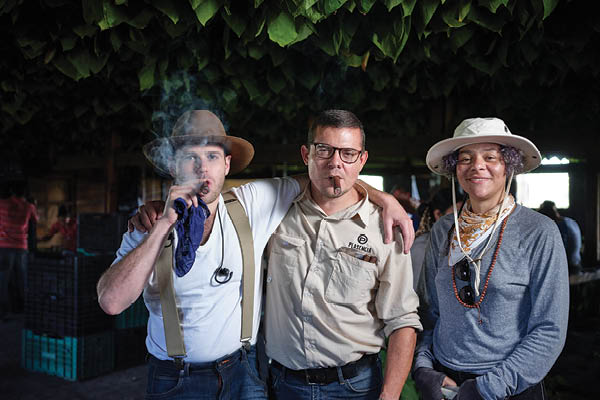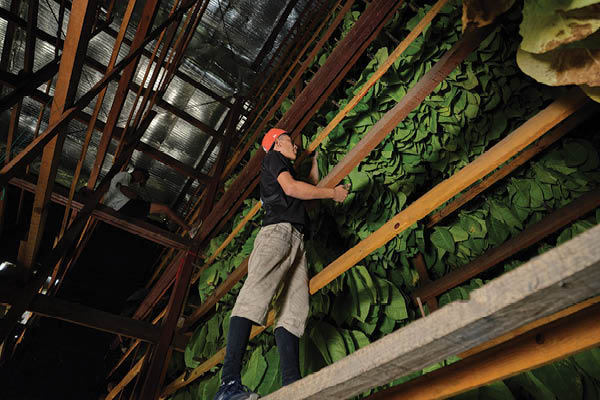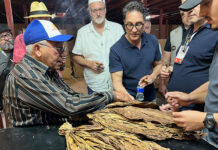Another important factor in determining the potential quality of a tobacco crop is one of the most important parts of tobacco growing: making sure there’s a good team tending to the crops and handling the tobaccos that have been harvested each year.

The Vertical Integration Advantage
One of the most common issues encountered on the factory level is concerning employee retention. This issue is made even more complicated due to the fact that the Plasencias own multiple factories, each of which has its own staffing needs. The Plasencias address this issue of retention by providing things that other cigar factories do not. These include amenities such as child development centers, health clinics, and training programs that help employees grow professionally and personally. Since implementing these different initiatives within its factories, the Plasencias have seen a substantial improvement in employee retention. Employee retention and making its factories a place where people will want to work is an ongoing area of concentration for the family.
When including Plasencia’s tobacco processing and cigar manufacturing operations in both Nicaragua and Honduras, the company has 5,500 people working in its factories. Tobacco continues to be the Plasencia family’s livelihood, and it has been for several generations. Cigars are how the family expresses their love and appreciation for tobacco. While some manufacturers simply grow tobacco and others make cigars or distribute and ship them, the Plasencias do it all, making them the go-to source for many in the cigar industry for their manufacturing needs.
“The fact of being vertically integrated has many advantages when it comes to our overall business. If I had to pick just one word: quality. But it’s about much more,” says José Plasencia. “By being vertically integrated, we are in a better position than most factories, as we have an inventory of raw materials to meet any increase in demand. We are able to control all aspects of our production. We choose the seeds to plant, [and] we choose the farms to plant in, the way we prepare and care for the soil, the hydration and fertilization, the procedures for drying and curing the tobacco when harvested, the aging process and, of course, the actual production of our cigars.”
The Plasencias have four factories in Nicaragua and another four in Honduras. The Nicaraguan factories are located in the northern part of the country while the Honduran factories are located in the southern region of the country. There are both similarities and differences between the factories: the leadership behind the factories is the same, which creates consistency and quality in the products all of the factories produce. Differences come into play in terms of what lines each factory manufactures. San Marcos, a factory located in Honduras, manufactures all of Plasencia’s 146 and Cosecha 149 lines. The other factories make cigars for other companies. In Nicaragua, there is one factory—Plasencia Cigars—that produces both the company’s Alma Series and its Reserva Original lines. This is another advantage of owning and operating its own factory: being able to easily scale its manufacturing capabilities to handle the demands of its business.
“We are able to consolidate our management and production teams, which enables us to maximize each person or team’s effectiveness, thus giving us an advantage over smaller companies or those that are not completely vertically integrated,” states José Plasencia. ”Additionally, we are able to lower production costs by eliminating expensive markups from middlemen and optimizing operations.”
Because there are so many different roles and tasks taken on by the factory’s teams, there is no “typical” day for anyone working in one of Plasencia’s factories. Whether it be administrative personnel, a cigar buncher or roller, or someone who is responsible for sorting tobacco, each person plays a very specific role within the production and manufacturing process. The Plasencia family is well aware of how each person they employ plays a key role in the company’s long-term success, so it’s always important to them to ensure that all of their employees are well taken care of.
“We have a very professional team in our human resources department that listens to our workers’ needs. For instance, we have a psychology department that helps to address employee needs and any issues that may present to the employee. Also, we have created our child development centers to provide care and education for the children of our employees. This removes a tremendous concern for the parents as they know their children will receive care and education in a safe environment. Additionally, we have a clinic that can address any physical issues or illnesses for the employee or their family members,” José Plasencia explains.
When the COVID-19 pandemic forced Plasencia’s factories to close for close to a month and a half, the Plasencias knew that their employee’s safety had to take precedence. Once the factories were able to reopen and the employees returned, Plasencia implemented all of the policies recommended by the U.S. Centers for Disease Control and Prevention (CDC) in order to prevent the spread of the virus.
“Fortunately, our employees were able to adapt to all the changes and were able to maintain the quality of our product as well as meet production targets,” says José Plasencia.
A lot takes place within the factory and tobacco fields, though little would be accomplished without a dedicated team of employees. The Plasencia family ensures its employees are well taken care of and are ready to move the company forward. Each factory has its own production goals that are set at the start of each new year. Every week, the company analyzes its key performance indicators to see whether or not it’s on track to meet its goals.

Peeling Back the Layers
The next time you light up a Plasencia cigar, know that your hour or so of enjoyment from smoking that cigar is the product of weeks, months and sometimes even years of work. Although the end product—the cigar—is impressive on its own, what’s even more impressive is how that single cigar came to be. For the Plasencias, tobacco is their business, and cigars are an expression of their love and dedication for tobacco.
While the industry gets wrapped up in ratings and overly processed images posted to social media of cigars being enjoyed around the world, there’s a lot of the cigar production process that’s not being captured or spoken about. A lot of what makes Plasencia’s cigars exceptional takes place not just in the humidor but in its tobacco fields and factories in Nicaragua and Honduras. Just as a cigar has layers to it, know that there’s also a lot you don’t see when it comes to how that cigar came to be, but often it’s these unseen processes—these unknown “300 hands” and unsung dedicated artisans and growers—who are responsible for bringing to life these blends and premium cigar products smoked and celebrated around the world.
This story first appeared in the July/August 2022 issue of Tobacco Business magazine. Members of the tobacco industry are eligible for a complimentary subscription to our magazine. Click here for details.
– Photography courtesy of Plasencia Cigars. Story by Antoine Reid, senior editor and digital director for Tobacco Business Magazine. You can follow him on Instagram @editor.reid.







